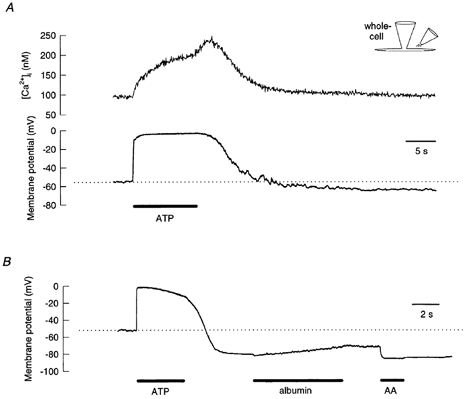Figure 6. Extracellular ATP causes membrane depolarization and an intracellular Ca2+ concentration increase which is followed by hyperpolarization and restoration of the intracellular Ca2+ concentration when ATP is removed.

A and B, in the current-clamp configuration, the cell membrane potential approaches 0 mV from the resting potential in the presence of extracellular ATP, and it goes towards the equilibrium potential for K+ when ATP is removed. A, before returning to baseline, the intracellular Ca2+ concentration further increased when the application of ATP ceased. This increase is probably from accelerated Ca2+ entry due to the extracellular Ca2+ concentration being restored upon the removal of ATP (which chelates Ca2+, Table 2). B, when albumin (20 μm) and arachidonic acid (20 μm) were applied to the cell sequentially after ATP application, the membrane potential shifted towards less negative and more negative values, respectively. Solutions B and D were used in the experiment shown in A and solutions A and C were used in the experiment shown in B. ATP (1 mm) was dissolved in solution A for both experiments.
